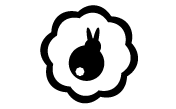Although I told you a little bit about this lovely book before, I have secured my own review copy of Classic Elite Shawls, Wraps & Scarves, by Betsy Perry (Sixth & Spring 2013). You know what that means: time for a No-Bull Book review.
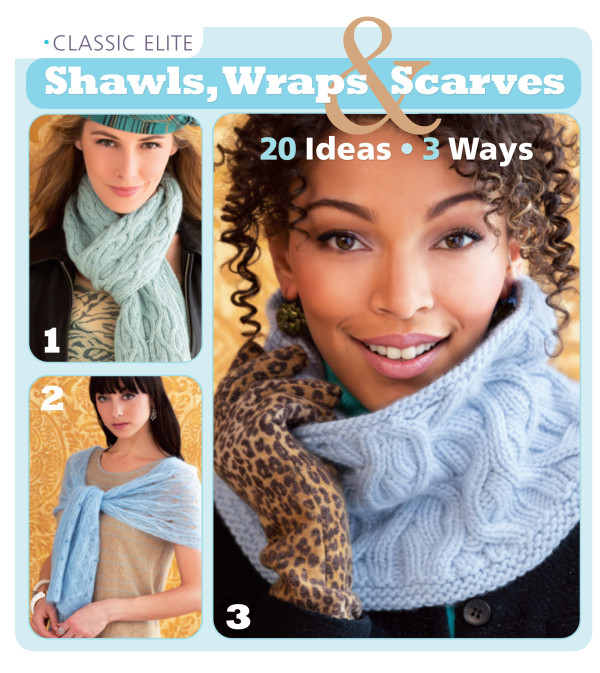
Classic Elite Yarns has been a stalwart in our industry for many years. Located in New England, the company began in the 1940s as an outgrowth of a mill (although today, CEY no longer manufactures yarns). CEY was originally known for their mohair yarns, but over the years have expanded and now offer all sorts of delicious natural fibers, like cottons, alpaca, silk and of course, wool. Since today is International Women’s Day, it is especially appropriate to take a look at Classic Elite since it is a company “owned, managed and staffed primarily by women” (as their website puts it). In addition to Classic Elite Yarns, the company also distributes the Jil Eaton line of yarns, and is the U.S. distributor for the gorgeous MillaMia merino yarns.
CEY owner Betsy Perry partnered with our friends at Sixth & Spring to create a book that would showcase CEY yarns. As I’ve mentioned before, the book uses a very clever approach to its designs: it focuses entirely on one category of garment–shawls, wraps and scarves–and clusters the designs in groups of three. Each group of designs uses the same stitch pattern(s) or motifs, but each design is knit up in three different yarns or colors, often at starkly different gauges. Although the basic stitch pattern or motif is more or less the same in each of the three designs, it is used in a slightly different way in each pattern; there may be a different number of repeats, a motif may be used as an edging in one design and a center motif in another; and so on. The result is an illuminating look at theme and variation, a sort of visual meditation on the creative process. (Wow, that sounded pretentious. But this is an issue that I personally find fascinating, how one source of inspiration can be translated into so many different finished projects with very different looks and feels.)
To see exactly what I mean, let’s take a look at the projects in the book. We’ll start out with the collection of a friend of mine, the amazingly talented Brooke Nico. Brooke took as her inspiration a leaf lace pattern combined with faggotted rib. She created these three beauties:
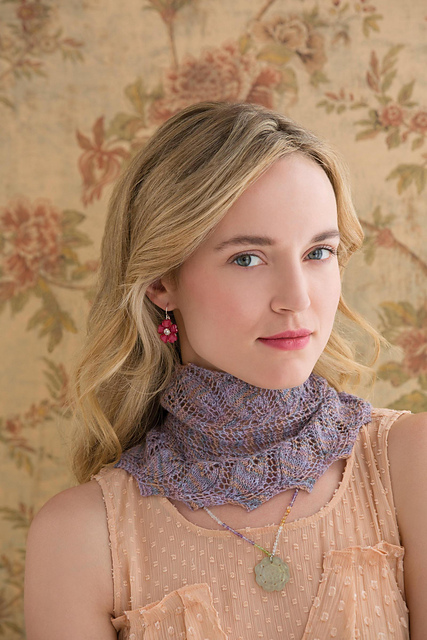
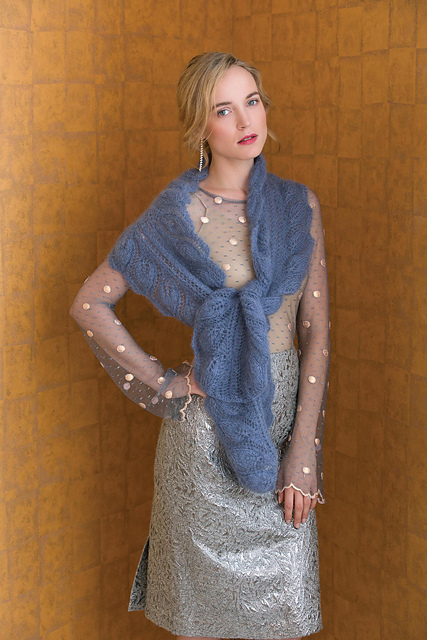
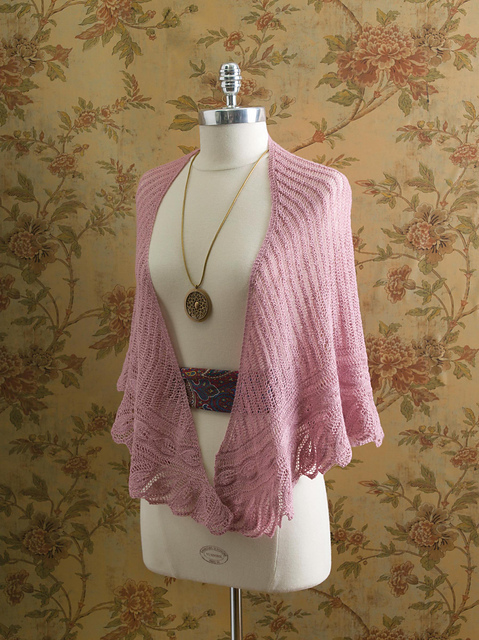
Top is a cowl or ruff knit in a laceweight, variegated yarn, Silky Alpaca Lace. Airy, lightweight, and the colors don’t fight with the lace pattern. Beautiful! Middle photo shows a generously-sized scarf, knit in a heavier-weight kid mohair blend, Giselle. The leaf motif now appears doubled, forming a kind of ruffle. The bottom photo shows a triangular shawl knit in a solid color of Silky Alpaca Lace. The leaf lace is used as an edging and center motif, flanked by the faggotted ribbing.
Another great example is the collection “Red Alert,” by Anastastia Blaes. Blaes took a triangular pattern (again, leaf-esque in shape) and combined it with vivid mohair yarns.
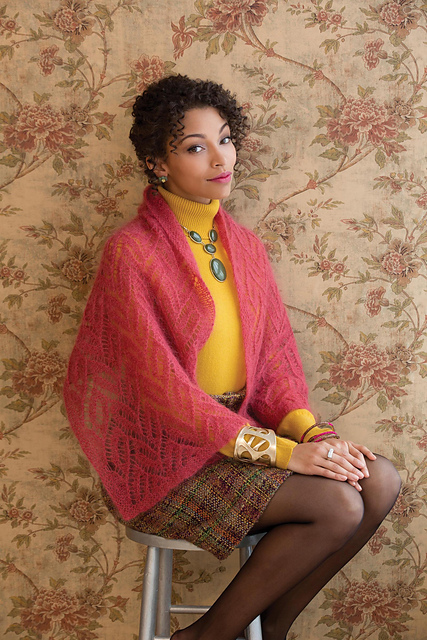
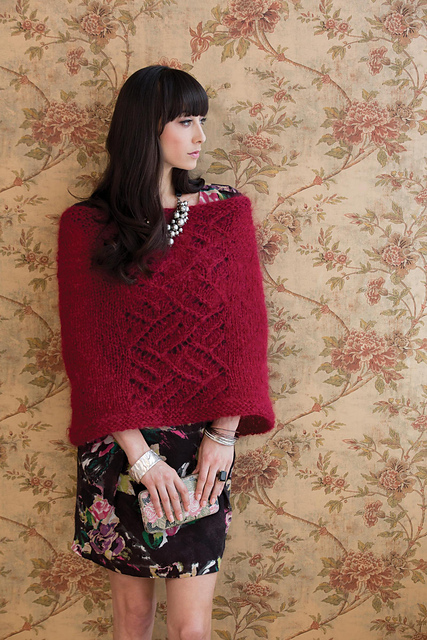
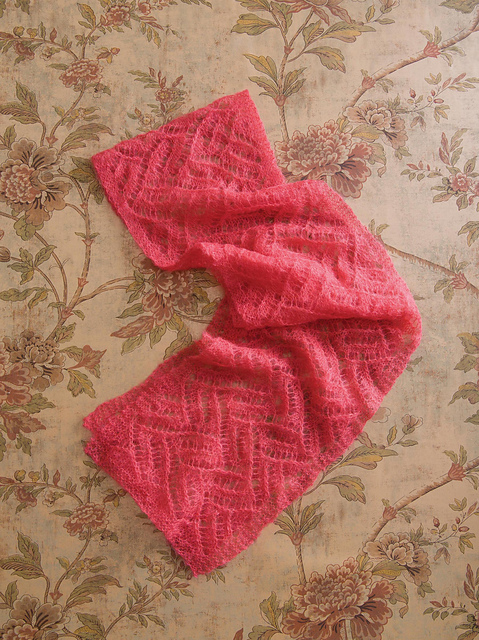
Top left is a wrap knit in Giselle in a rich warm rose, with an all-over pattern; top right shows the zigzag pattern used as a central motif in a capelet, knit in worsted weight mohair blend La Gran; bottom shows a scarf knit in salmon Pirouette (a kid mohair/bamboo/nylon fingering weight blend).
Not all the patterns riff on lacy stitches. Susan Mills looks at stripes in three ways, using an openwork stitch.
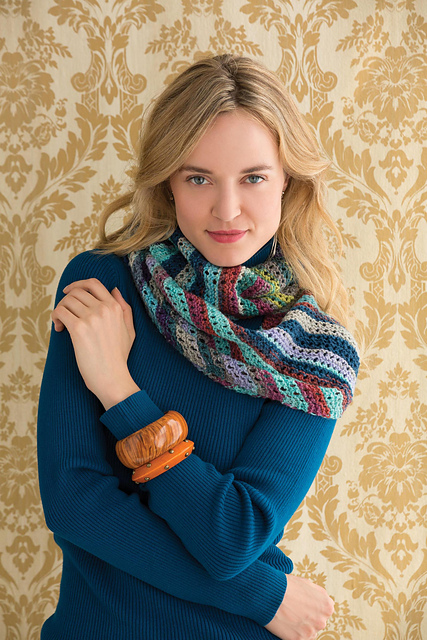
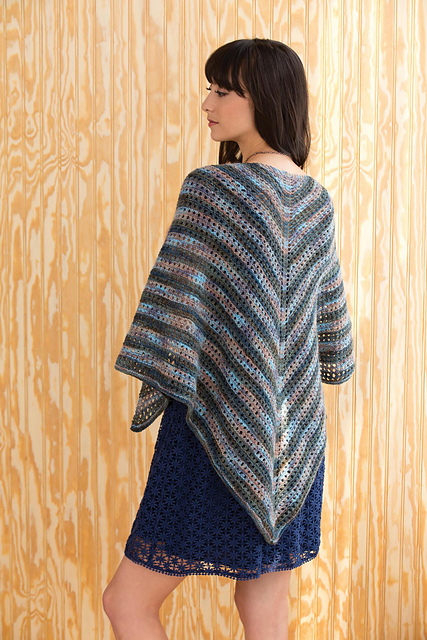
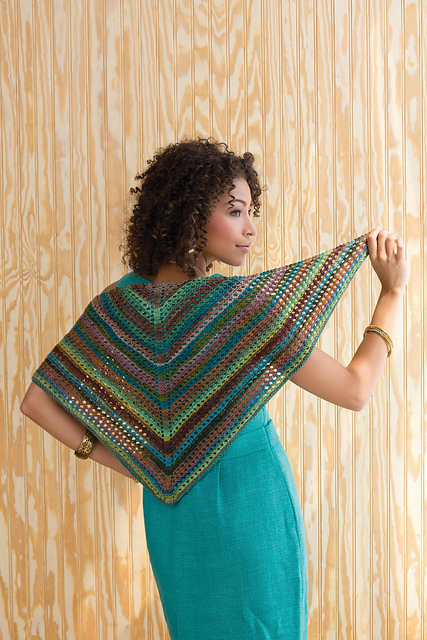
Top left shows the stripes in variegated Liberty Wool Light (a sportweight) in a long cowl; top right is a striped shawl knit in fingering-weight Alpaca Sox; and bottom is a shawl knit in Liberty Wool Light in a smaller size and different palette.
Jonesing for cables? Anastasia Blaes presents a trio using a reversible cable pattern. The cowl uses Ariosa, a chunky extrafine merino, and the cables are big and striking; the scarf is knit in Woodland, a DK-weight yarn made from wool and nettles (yes, as in the plant!), and the cables are still prominent but not quite as bold; the shawl, knit in fingering-weight Pirouette, transforms the cable into something light and airy.
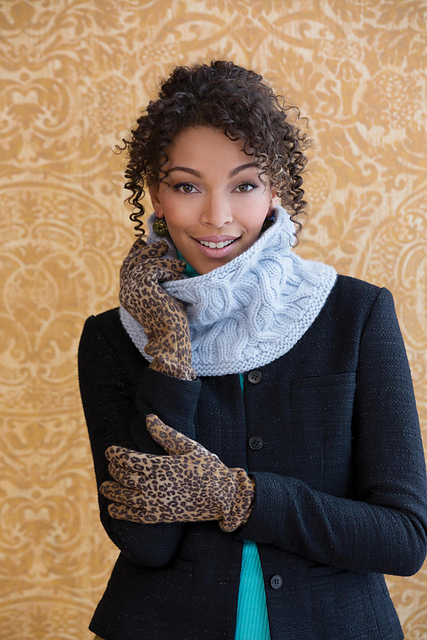
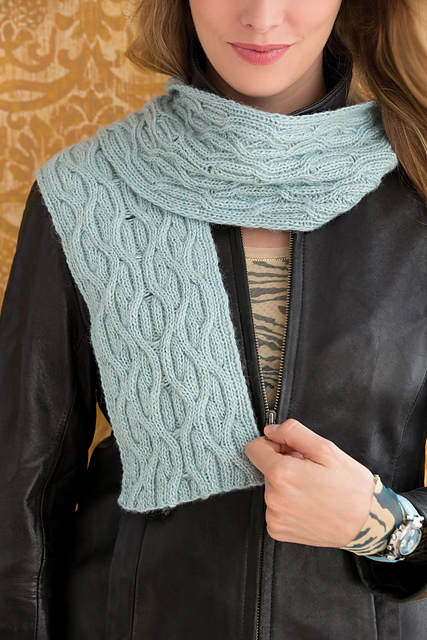
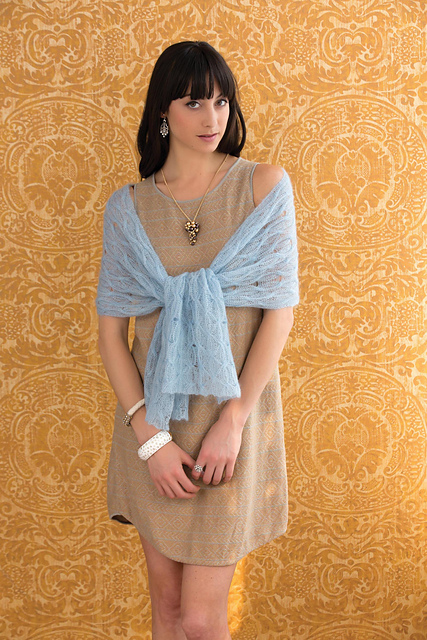
In her own inimitable way, Jean Moss uses a diagonal stitch pattern interspersed with black columns for a very modernist look.
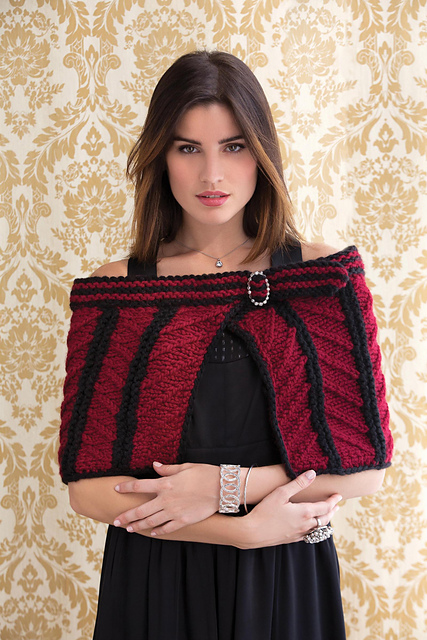
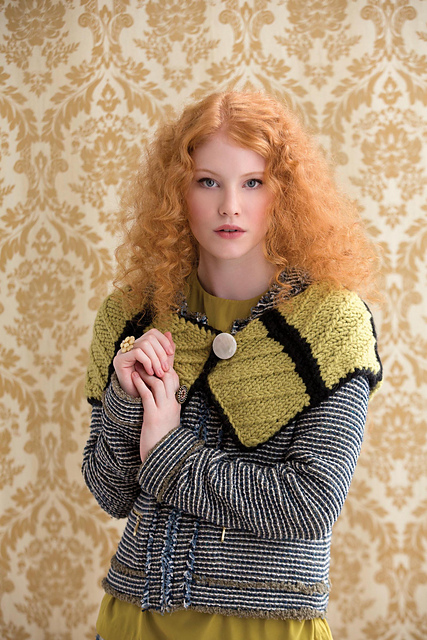
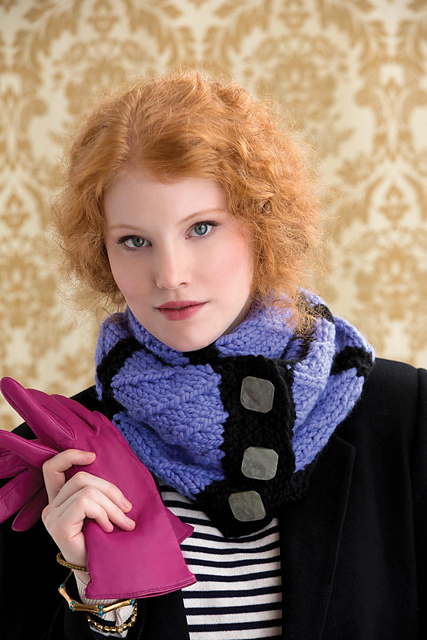
The red capelet uses a striped garter-stitch edging to frame the pattern; I love the richness of the red combined with the black, and the way it is worn with a pin at the top; the green capelet uses softer celery green, with a less angular look; and the cowl pairs periwinkle with black, closing with chunky dramatic buttons.
I was very pleased to have a collection featured in the book. I took as my inspiration a snaky pattern with alternating rows of eyelets. You could call this set small, medium and large, because three very different yarn weights gave very different results. Bulky Toboggan and a single repeat of the design gives a quick-to-knit scarf:

Sportweight Inca Alpaca with several repeats of the stitch pattern create a scarf:
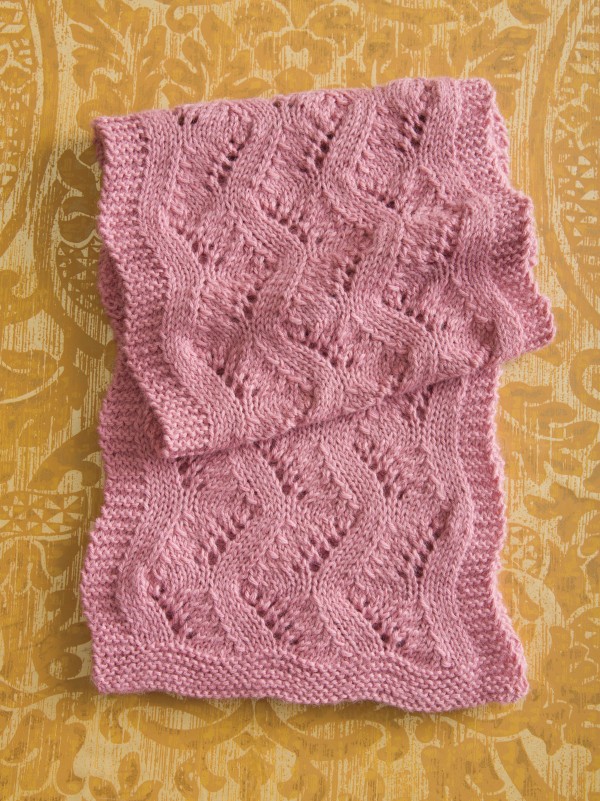
and ethereal laceweight with just a single repeat as border creates a shawl:
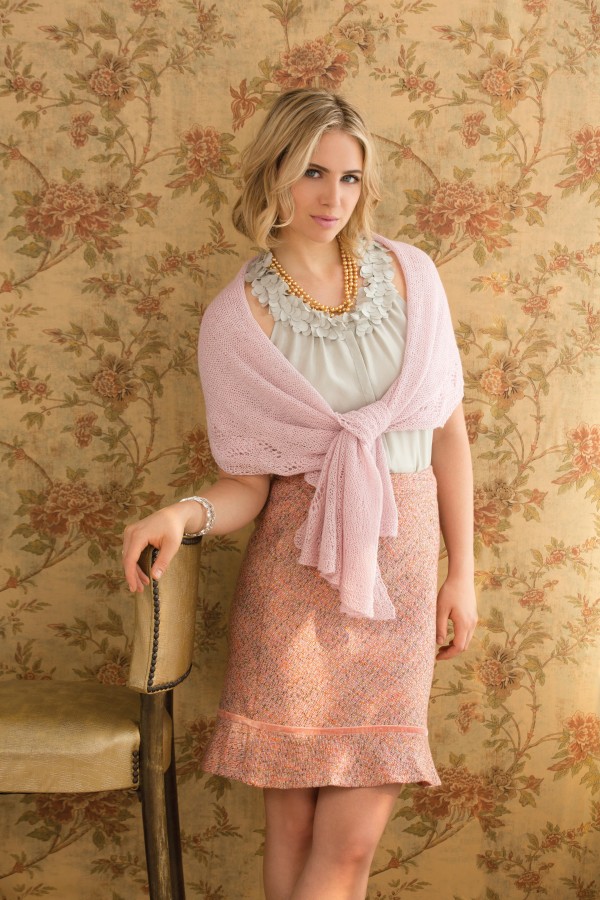
There are plenty of other sets that play with stripes, fair isle, texture and more, so there’s something for everyone. Other favorites of mine include Anniken Allis’ trio in lacy white (just the cowl shown):
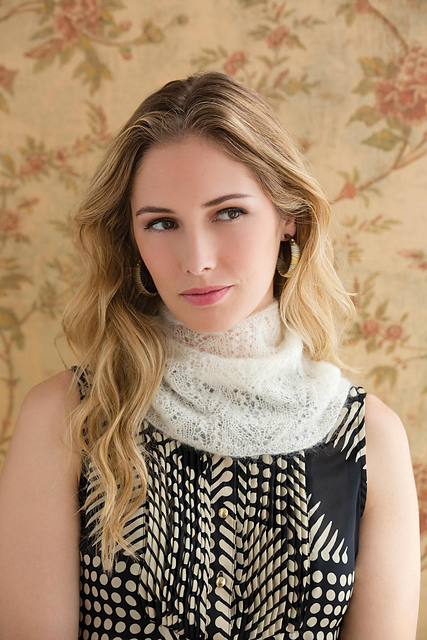
Linda Medina’s tiered shawl:
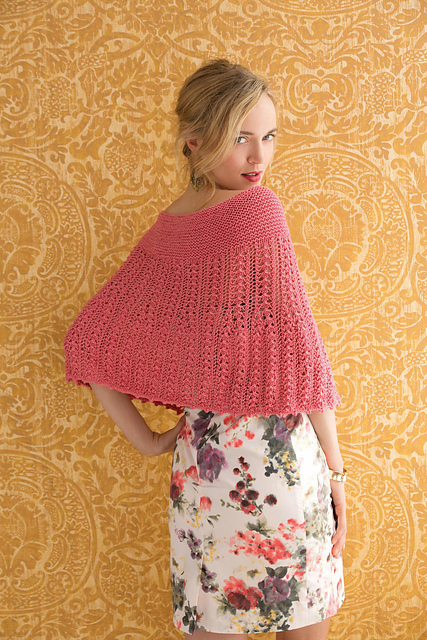
Jacqueline VanDillen’s fun, colorful cowl:
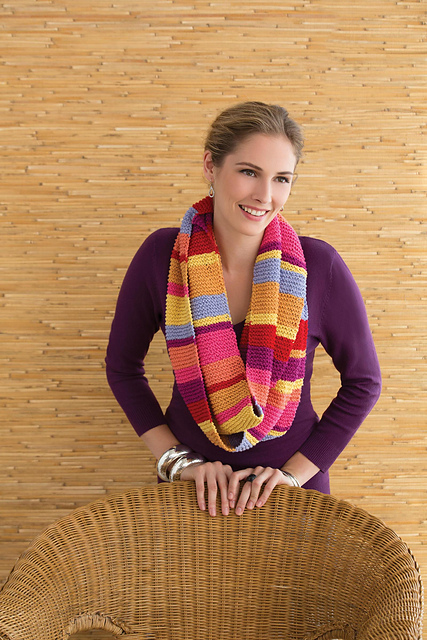
and Tonia Barry’s trio of copper/salmon ruffled garments:

I usually give a breakdown of patterns, which is somewhat less necessary here: all patterns are women’s accessories. But to be thorough, I divided the patterns into shawls/stoles/wraps (about 15); scarves (about 27); cowls (about 10); and capelets/shrugs (about 8). Everything is one size fits all. There are lots of luscious photos; charts where necessary; lots of close-ups of the stitch patterns and motifs used; and on the first page of each group, photos of the yarns used, which is helpful. Yarn weights truly run the gamut, from laceweight (category 0) to superbulky (category 6) and everything in between. There are a total of sixty patterns, and you can buy the book via the link above for about $13.50, which means each pattern costs less than a quarter–making this an excellent value. And because the projects call for relatively small amounts of yarn, there are plenty of patterns to help you use up leftovers and odd balls in your stash, after you’ve treated yourself to some of the gorgeous yarns used in the book.
All photos are from Classic Elite Shawls, Wraps & Scarves, published by Sixth & Spring Books. Photography by Jack Deutsch and text copyright © 2012 by Sixth&Spring Books. Used by permission.
